Batty about Summer
It’s summertime (in the Northern Hemisphere) and the evening skies are alive with activity. As the sun sets, bugs are flying around and bats are
How does a community scientist from Toronto, Canada suddenly end up relocating to Austin, Texas, to work as a full-time bat biologist for Merlin Tuttle’s Bat Conservation? The answer begins a few years back. One day, as a little girl of six, I looked into the sky above our backyard and saw my first bats. I was mesmerized as I watched them flit back and forth against the darkening sky. I had always been drawn to wildlife, but there was something unique about bats. One of my early childhood books was filled with Merlin’s photos of them.
One evening, at bedtime, a bat actually appeared in my room. I was so excited that I went to get my parents. THEY. FREAKED. OUT! I had never seen adults in such a frenzy before over such a small animal. I watched my dad safely trap the bat in a margarine container, and just when I thought he was going to release it, to my horror, he flushed it down the toilet! Little did my parents realize, the significance of that moment in setting the course of my life.
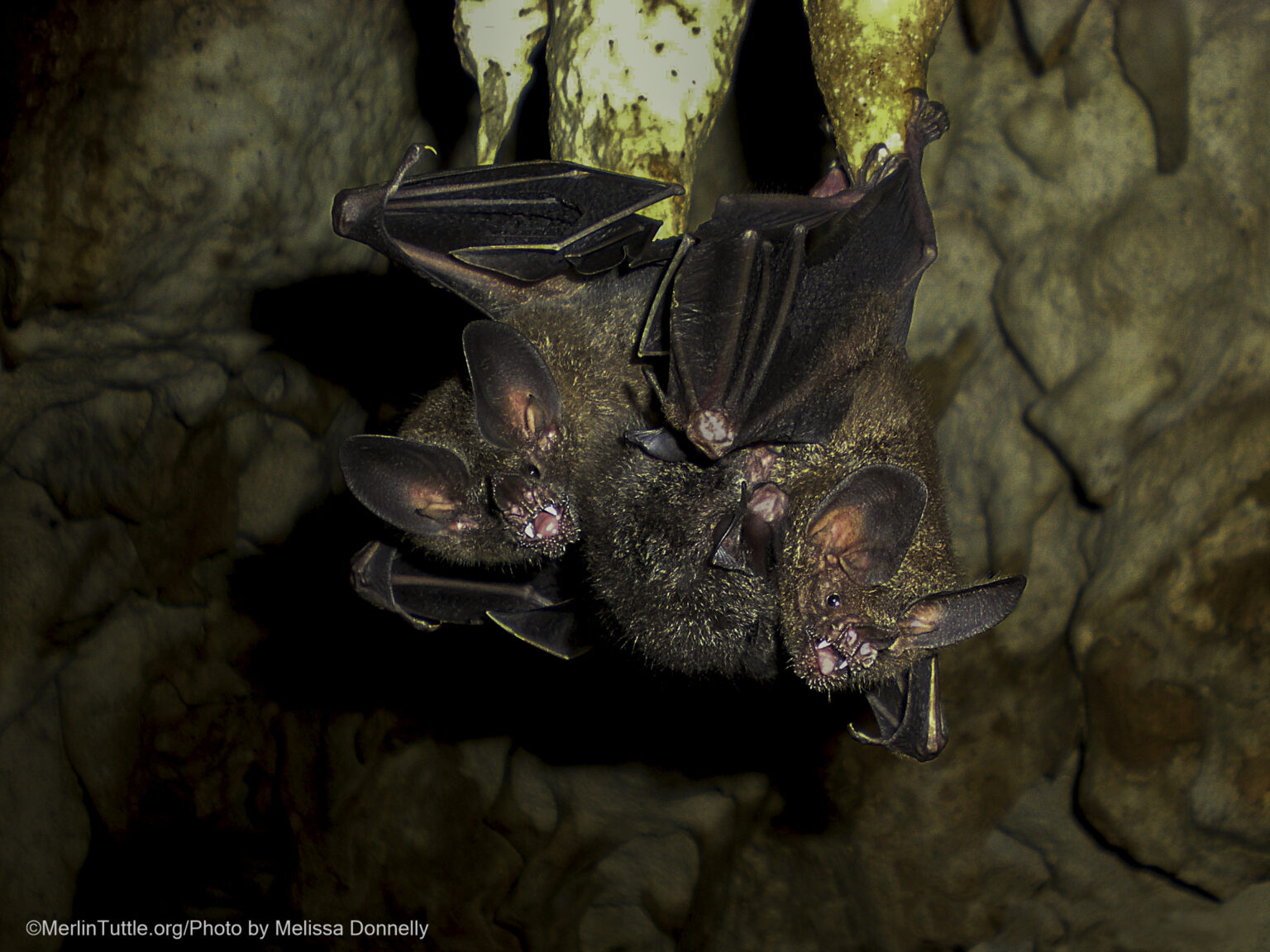
Flash forward to my time in university. I have never considered myself someone who learns well in a classroom, so when I had the chance to go to Panama and attend a tropical animal course, I jumped at the opportunity. What I really wanted was to watch bats in the wild. I had never been to the jungle or any place similar before. When I walked into a bat cave for the first time, I knew this was what I wanted to do in life. Funny enough, after having to hike in the extreme heat and humidity, carrying heavy gear, to collect data for my project, I said to myself, “this was fun, but I don’t think fieldwork is for me.” That was a lie!
After that course, I realized I really knew nothing about how scientists work with bats, or the skills needed, so I set out to try and find people willing to overlook my lack of experience and teach me. Coincidentally, that year, 2011, the North American Symposium for Bat Research (NASBR) was being hosted in Toronto. It seemed like a sign from the Universe! There I met people who, from my perspective, were super cool, renowned in the world of bats. Over the years, some became colleagues, mentors, and friends.
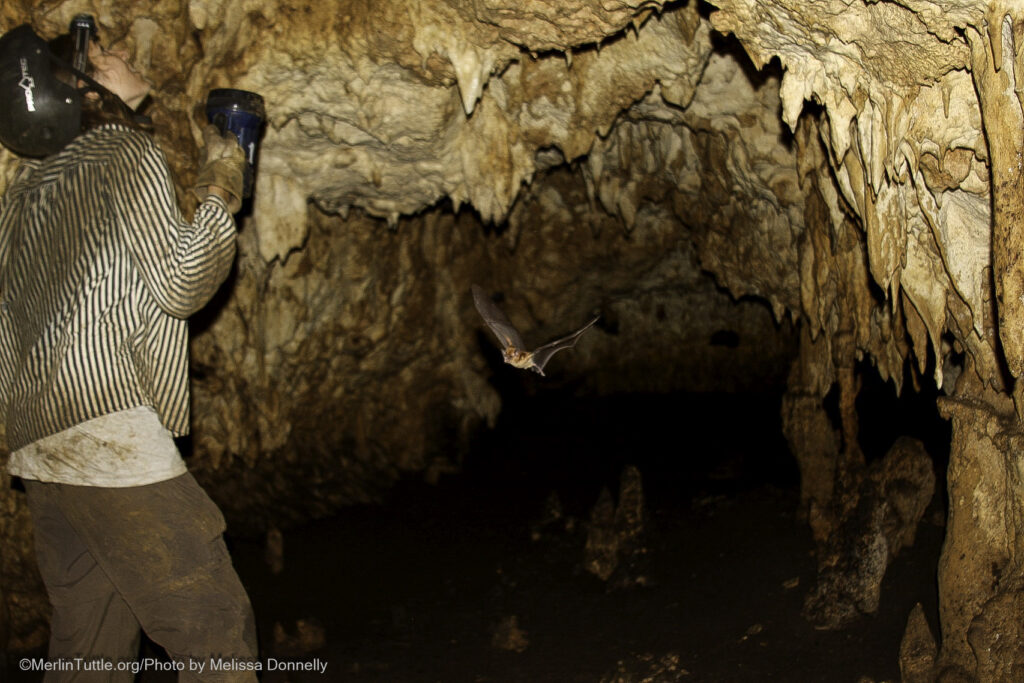
You may be asking, how is this relevant? Well, it’s kind of like six degrees of Kevin Bacon, but with the bat community. Attending that conference led me to Fiona Reid, naturalist, author, and illustrator, who then introduced me to Daniel Hargreaves, co-founder with Geoffrey Gomes, of a conservation organization named Trinibats. Daniel invited me to one of his workshops in Trinidad, where in 2016, I met his workshop co-leader, Geoffrey Gomes. They in turn introduced me to Merlin Tuttle and Teresa Nichta who had joined the workshop to photograph the island’s unique bats.
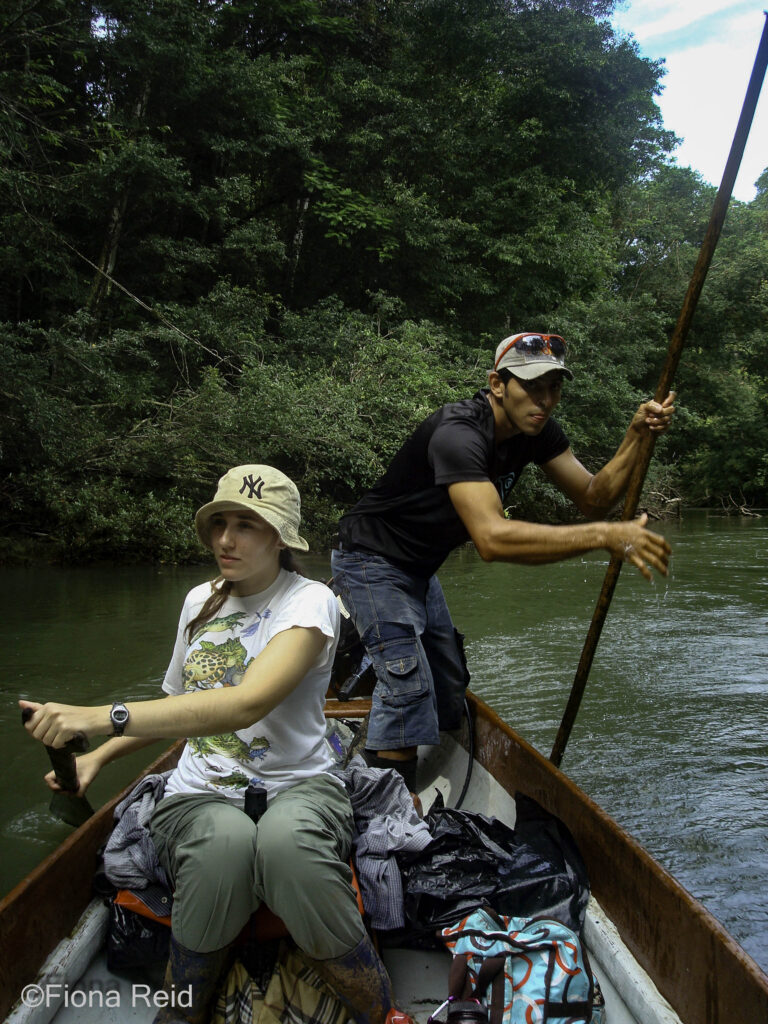
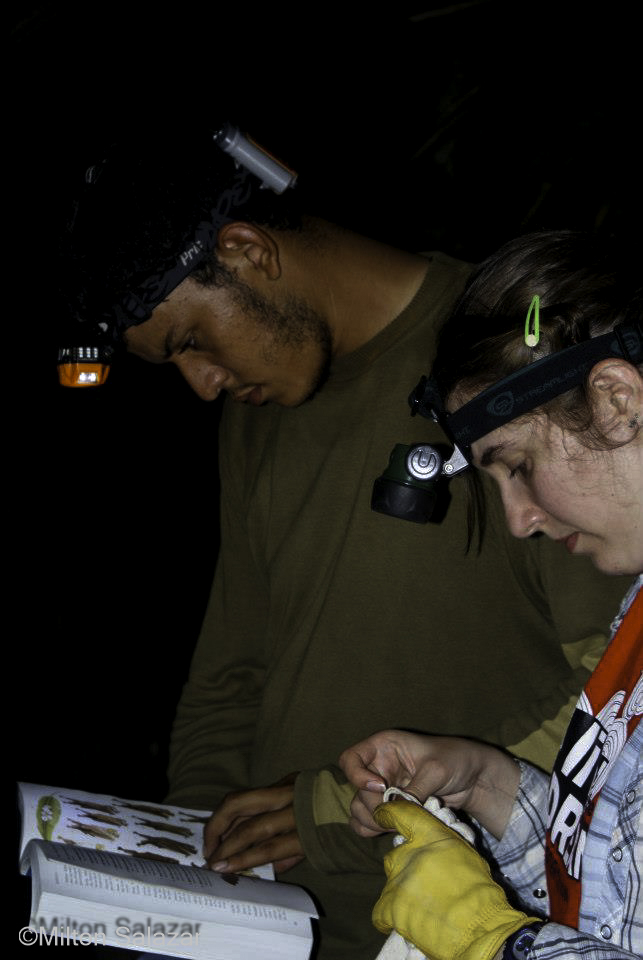
Teresa and I ended up being roommates for my last few nights, and I got to watch her help Merlin photograph bats. I was amazed to see all that bat photography entails! What an impressive set-up! Not only building sets indistinguishable from where the bats naturally lived and hunted, but I got to watch Merlin, train them to come to his hand or go where he pointed on call. Very quickly, he would have bats that I had helped take out of mist-nets just minutes earlier eating mealworms from his hand, even coming on call to get more! I still have fond memories of a cheeky big ear-eared bat (Micronycteris microtis) who figured out where Merlin’s feeding container was kept and stuffed herself with stolen mealworms. She [I fondly named her Melinda at the time] then became featured in several of Merlin’s photos, of a bat capturing katydids and caterpillars off of plants in his sets.
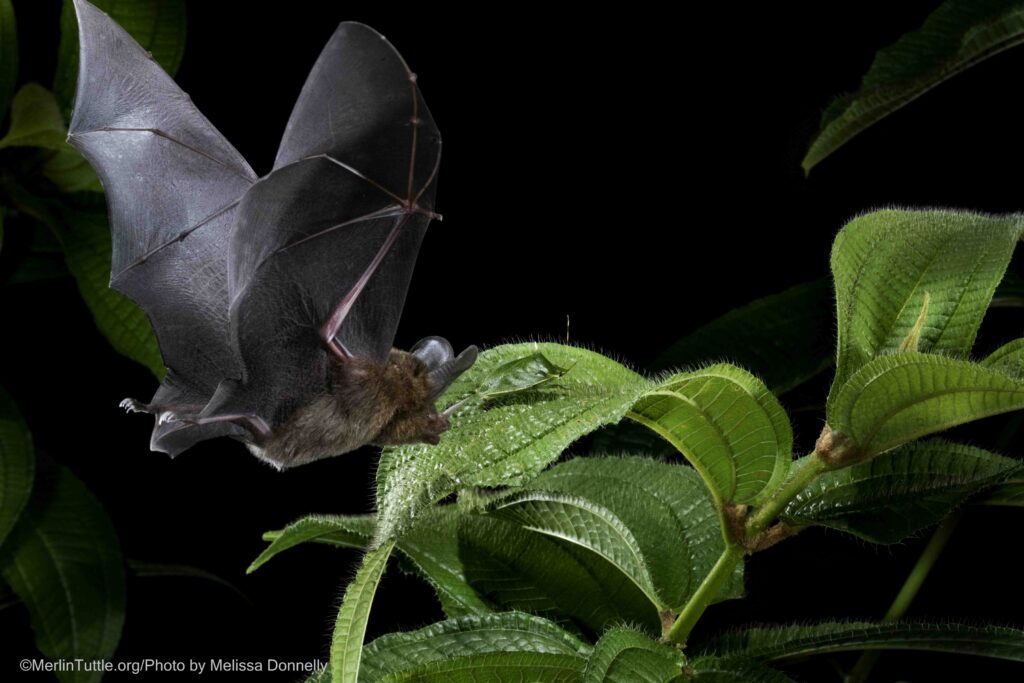
Immediately after that trip, I signed up to become an MTBC member and from there I got to participate in one of MTBC’s 2018 workshops in Panama, where I continued my fascination with photography. We captured more than 50 species of an amazing variety, from tiny proboscis bats that weighed less than a U.S. nickel to giant fish-eating bats with nearly three-foot wingspans. Many were insectivorous. Others specialized on fruit or nectar. Some even ate frogs. It was a wonderful opportunity to learn bat identification.
Over the years, bats became a form of comfort to me; kind of like macaroni and cheese after a bad day. Since jobs in that field were scarce, I became creative at figuring out how to keep bats a part of my day-to-day life. I made it my unofficial mission to travel to as many different places as possible where I could work with a diversity of bat species. With this, I spent a few summers volunteering for Operation Wallacea on the islands of Dominica, in the Caribbean, and Buton, in Indonesia. I managed to work as a field assistant at Long Point, Ontario, allowing me to see my first Canadian bats. I traveled to Zambia to see the Straw-colored fruit bats migrating in Kasanka National Park. I signed up for several of Fiona’s workshops which took me everywhere from Texas to Brazil. Traveling to Varadero, Cuba, on a family holiday, in 2012, I visited Cueva Ambrosio, a bat tourist cave. I got to talking with the staff and learned about their conservation work and the general struggles that comes with being a scientist in Cuba.
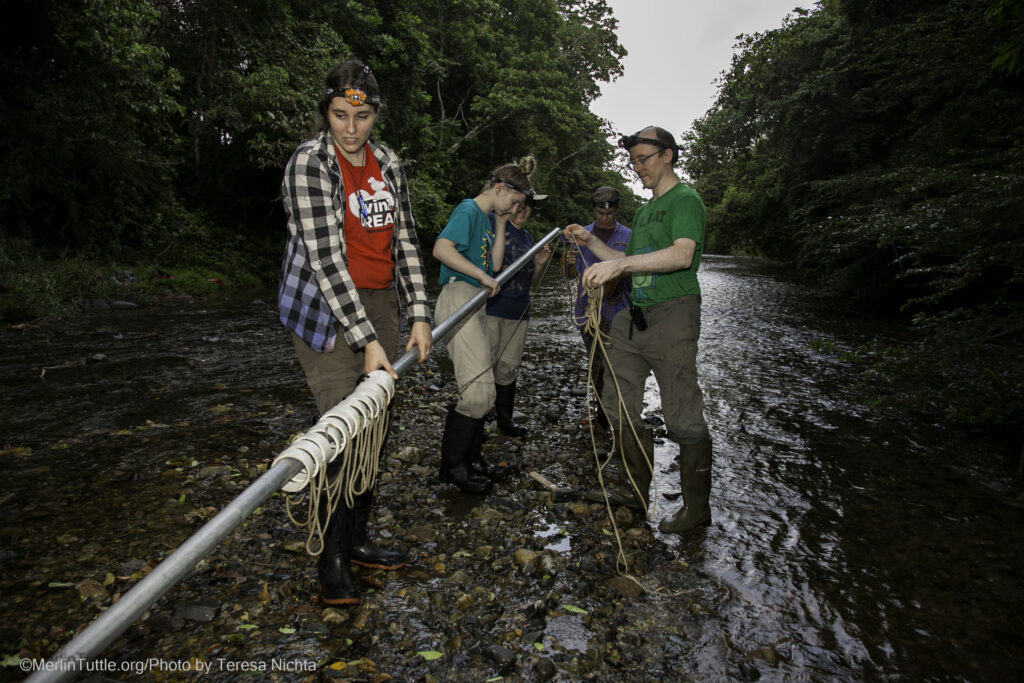
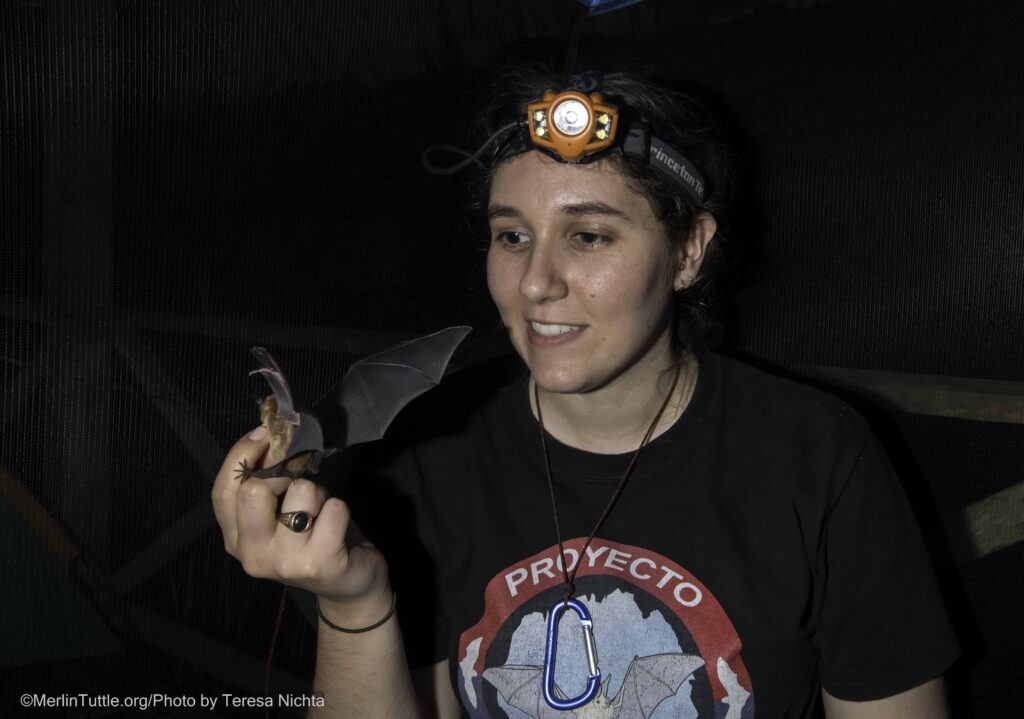
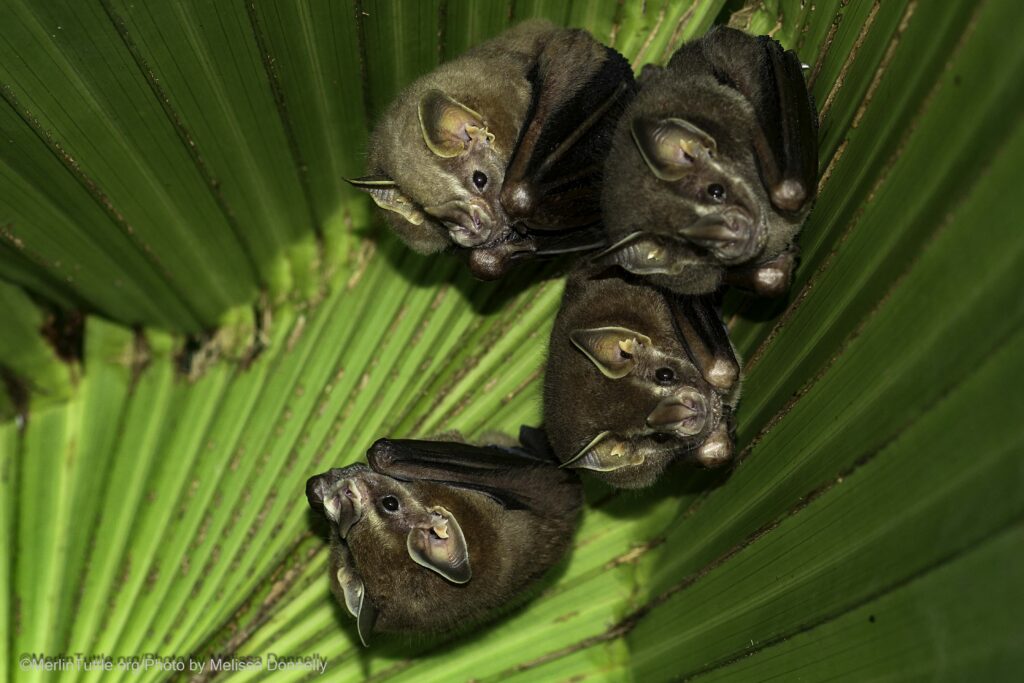
At the time I was working at the Toronto Wildlife Centre. The head vet had co-founded Animal Experience International (AEI), an organization that supports international NGOs. We both agreed that bat conservation researchers in Cuba could benefit from AEI’s partnership. Proyecto CUBABAT was born! Since that initial start-up, Proyecto CUBABAT went from a small regional conservation project, to a nationally recognized one that was adopted into The Antonio Núñez Jiménez Foundation for Nature and Humanity (FANJ). It is now entirely run and self-sustained by Joel Monzon-González, his family, and many other members!
My role in this was small; I enjoyed being able to connect the broader bat community and facilitate communication/resources between Cuba and the outside world. On the plus side, I got to learn and work with some of Cuba’s bats and caves and have something to look forward to over my holidays!
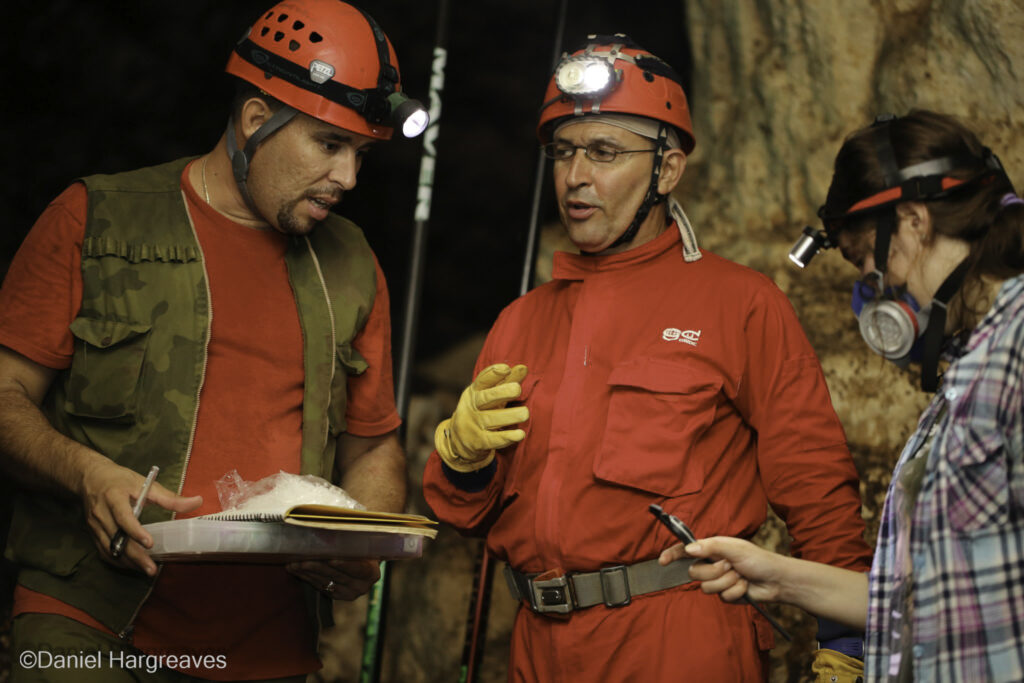
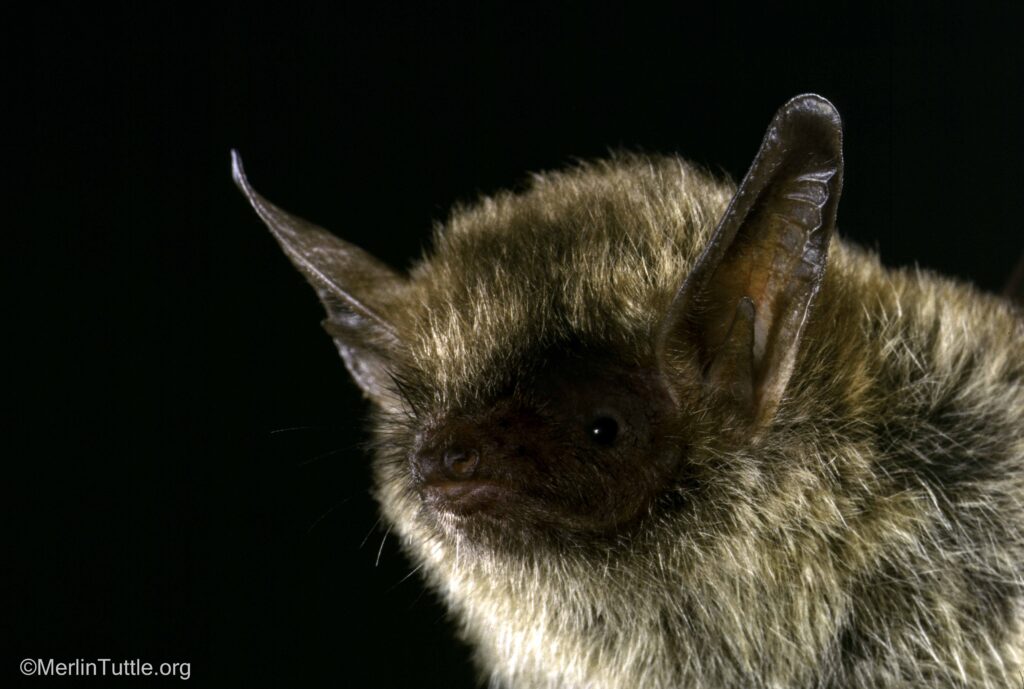
It wasn’t until the trip to Panama in 2018 that I learned about a bat conservation program happening right in Toronto, in my own backyard! I traveled extensively because I knew of no bat conservation opportunities in Ontario. For the longest time, when I Googled “Bat conservation Canada” most of my results turned up “Got bats? Here’s how you get rid of them!”
I applied and managed to get contract work for three years at the Toronto Zoo working for the Native Bat Conservation Program. It certainly helped cut my commute costs! I learned about bat acoustics, and participated in research on the northern myotis (Myotis septentrionalis) and in general contributed to bat outreach and community engagement.
This brings us forward to 2023. While on vacation, I was in Costa Rica helping run a bat workshop alongside my teachers, friends, and mentors. I had been invited to a post-workshop bat photography excursion with friends who were meeting up with Merlin and his MTBC operations manager, Duncan Hicks. I was just happy to get the opportunity to see some more cool bats, and have a few extra days out in the jungle, hiking, and enjoying the heat. You can read more about it here. I remember sitting down to dinner with Merlin and Duncan answering questions that suspiciously sounded like an interview. Turns out a certain Mr. Daniel Hargreaves had an idea in mind that would change my life.
Merlin was looking for someone truly passionate about bats and their conservation, who also had a wide variety of field experience, including workshop leadership. Lucky me! My years of vacation participation and volunteer leadership at varied workshops, combined with passionate determination, had finally paid off.
A few weeks after returning back to the freezing cold of Toronto, I was completely caught off guard when I received a call from Merlin himself! He was looking for someone to join the MTBC team. He wanted someone who could combine a passion for learning about bats with an already proven background in field work, leading workshops, and public communication. And he wanted me! I couldn’t believe it! Naturally, a million things started coursing through my mind, particularly my insecurities about not yet having even a Master’s degree, but ultimately, he said that it was my passion for learning, not the degrees I earned, that really mattered. This was an opportunity for me to learn more from him, his team, and collaborating colleagues – one I could not pass up.
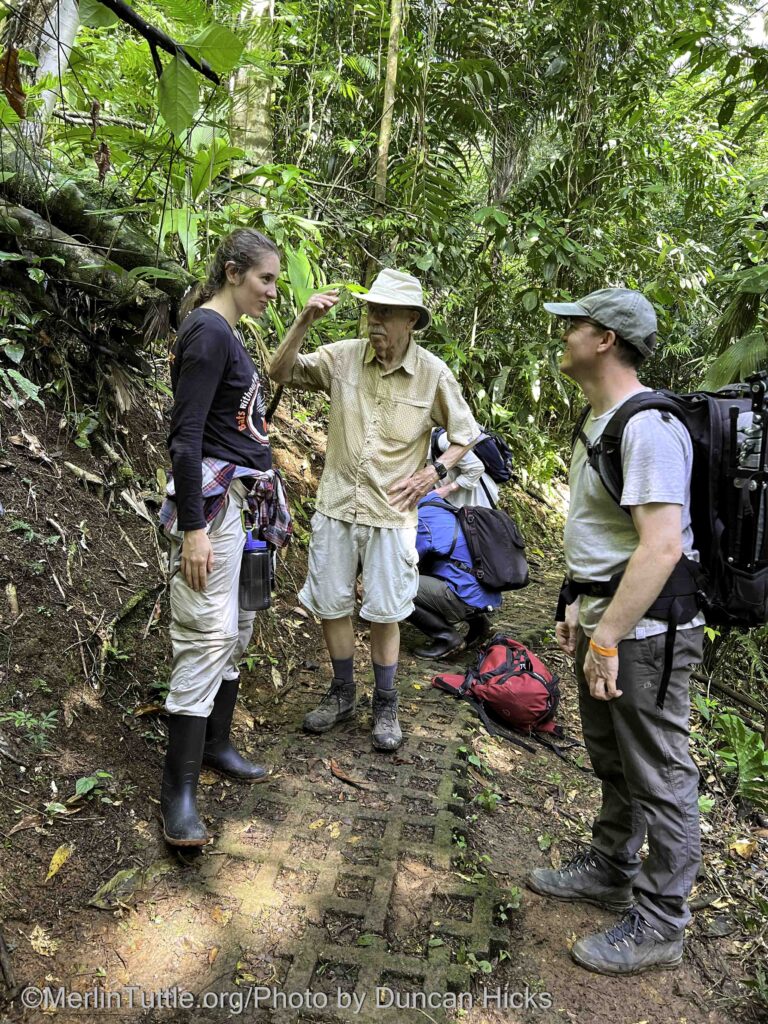
So today, I find myself 1,610.4 miles from Toronto, amongst a welcoming group of passionate people from many different backgrounds, but all dedicated to bats. I’m “Livin’ my Dream” in a new job and life. I don’t think I’ll ever forget my first day, considering that I was immediately informed “Oh, by the way, you will be going on a week-long field trip to some of America’s most important bat caves with Merlin and Teresa, leaving in four days.” Stay tuned for an update from that trip!
Some of Melissa’s photos from her co-authored guide to the Bats of Buton Island.
Love our content? Support us by sharing it!
It’s summertime (in the Northern Hemisphere) and the evening skies are alive with activity. As the sun sets, bugs are flying around and bats are
How hot is too hot? When it comes to bats and their ideal roosting temperatures, striking the right balance is crucial. We know that bats
As I rappelled down a sheer rock wall to reach the entrance to America’s most important remaining bat hibernation cave, I couldn’t believe my good
The Pocket Guide to the Mammals of Costa Rica is a comprehensive and exquisitely well-illustrated guide to the mammals of Costa Rica. Well-organized and easy
2024 © Merlin Tuttle’s Bat Conservation. All rights reserved.
Madelline Mathis has a degree in environmental studies from Rollins College and a passion for wildlife conservation. She is an outstanding nature photographer who has worked extensively with Merlin and other MTBC staff studying and photographing bats in Mozambique, Cuba, Costa Rica, and Texas. Following college graduation, she was employed as an environmental specialist for the Florida Department of Environmental Protection. She subsequently founded the Florida chapter of the International DarkSky Association and currently serves on the board of DarkSky Texas. She also serves on the board of Houston Wilderness and was appointed to the Austin Water Resource Community Planning Task Force.
Michael Lazari Karapetian has over twenty years of investment management experience. He has a degree in business management, is a certified NBA agent, and gained early experience as a money manager for the Bank of America where he established model portfolios for high-net-worth clients. In 2003 he founded Lazari Capital Management, Inc. and Lazari Asset Management, Inc. He is President and CIO of both and manages over a half a billion in assets. In his personal time he champions philanthropic causes. He serves on the board of Moravian College and has a strong affinity for wildlife, both funding and volunteering on behalf of endangered species.